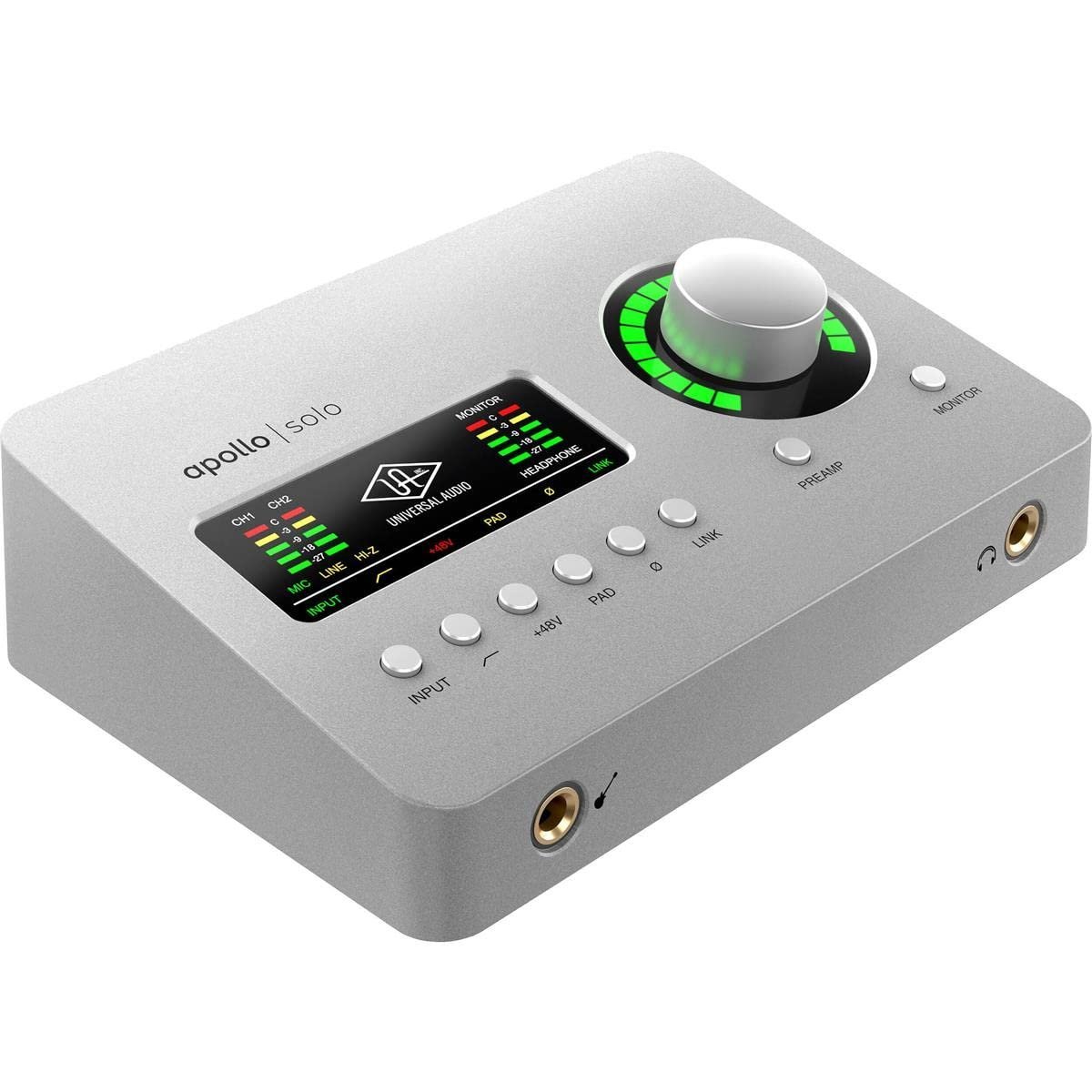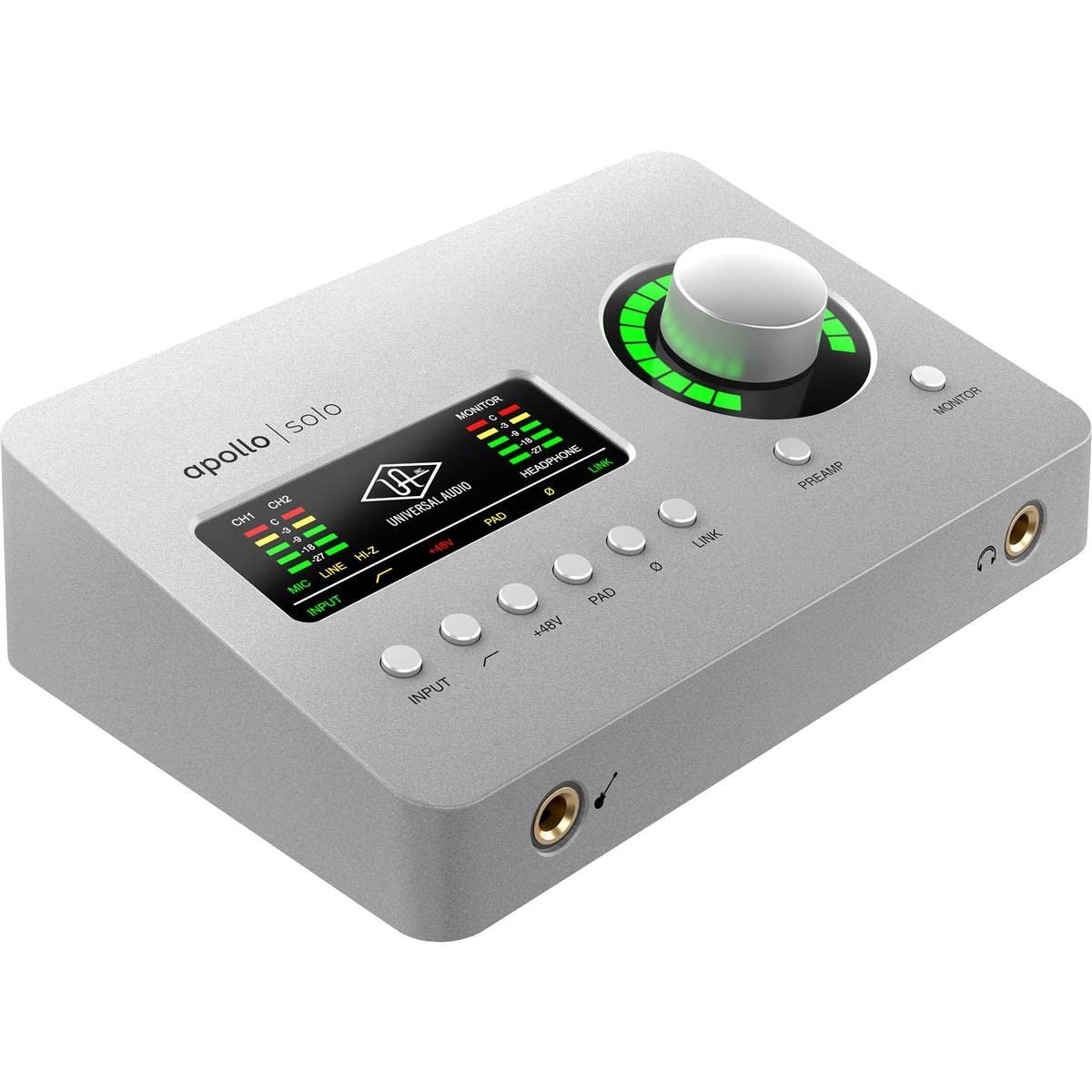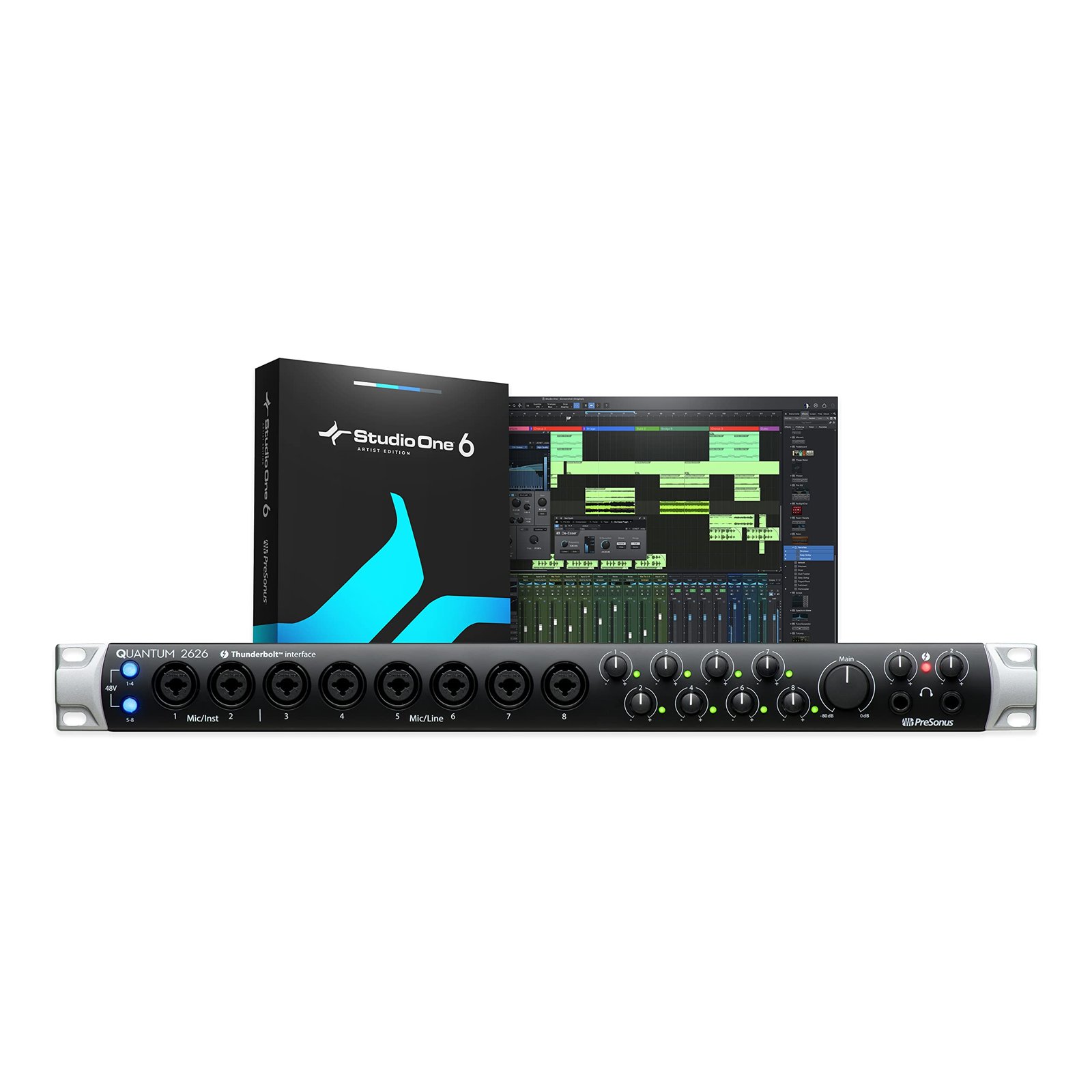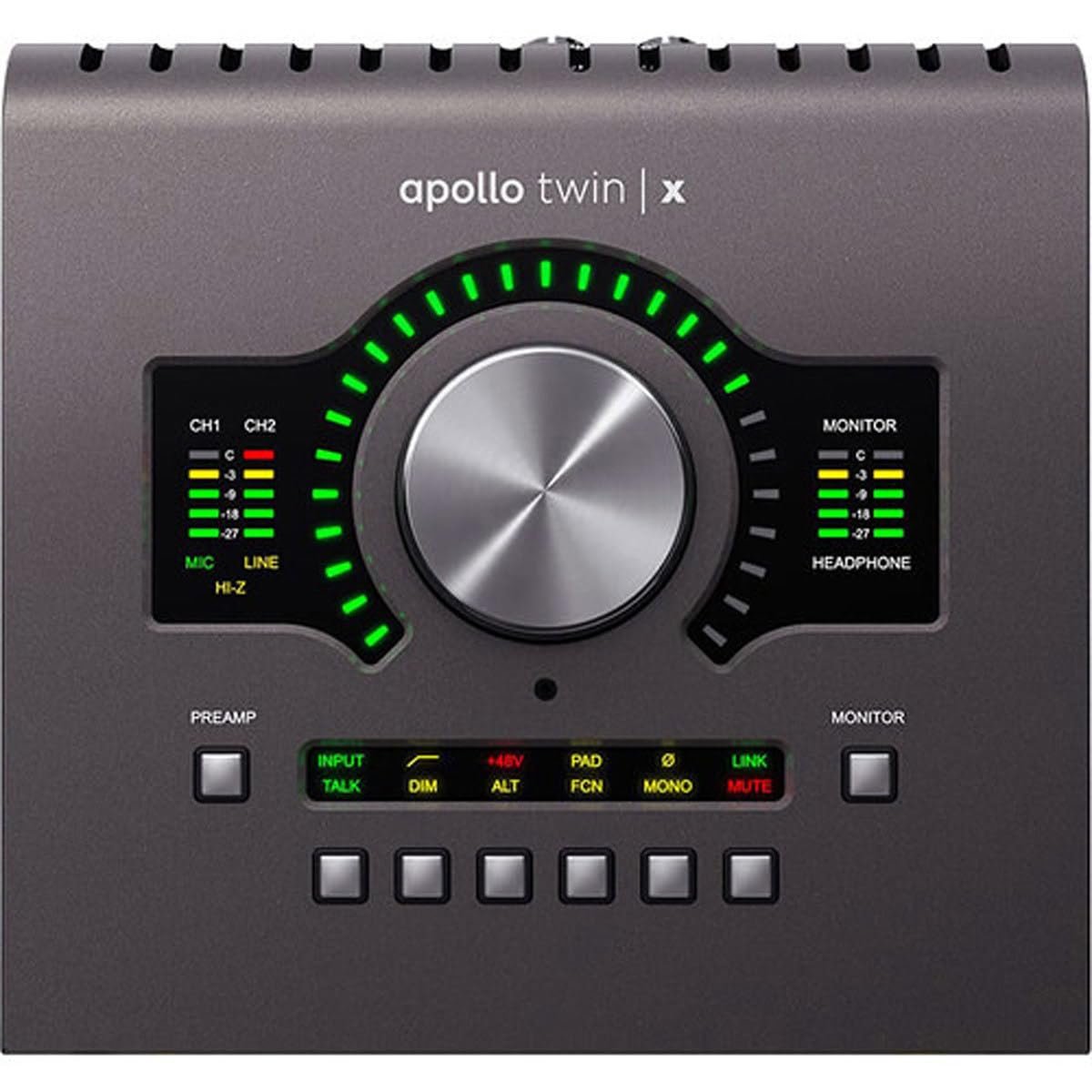Audio interfaces are essential tools for anyone serious about music production or audio recording.
These devices serve as the bridge between your musical instruments or microphones and your computer, allowing you to capture high-quality sound.
Thunderbolt audio interfaces stand out due to their impressive speed and low latency.
Thanks to the Thunderbolt connection, data can be transferred at much higher rates than with USB connections, making these interfaces an attractive choice for professional and home studios alike.
When considering a Thunderbolt audio interface, you need to focus on several important factors.
One key consideration is the number of inputs and outputs you require.
This depends largely on your recording needs and the types of instruments or equipment you plan to use.
Additionally, ensure compatibility with your existing devices and software.
Some interfaces offer additional features such as built-in preamps or digital signal processors, which might be crucial depending on your setup.
Price can also vary significantly, so balancing your requirements with your budget is crucial.
Best Thunderbolt Audio Interfaces
When you’re looking to capture the nuances of your sound, investing in a high-quality Thunderbolt audio interface is key.
Whether you’re a musician, podcaster, or just passionate about audio, finding the right gear can make all the difference.
Check out the list below to find the best options on the market today.
Apollo Solo Heritage Edition
If you’re looking to boost your audio production quality with tons of features, this audio interface might be the right one for you.
- Premium suite of plug-ins offers excellent value
- Comes with impressive Unison mic preamps
- Bus-powered makes it portable and convenient
- Limited processing power for simultaneously running plugins
- Sometimes struggles with power-on issues
- Requires rebooting of the computer occasionally
This special edition audio interface from Universal Audio delivers exceptional audio conversion quality.
The software package is impressive, offering a suite that’s valued at over $1300, making it an enticing offer for those looking to enhance their sound production setup.
Its inclusion of top-notch Unison mic preamps and real-time plug-in processing makes it stand out in any recording environment.
One of the major highlights is its compact, bus-powered design, which simplifies connectivity with both Mac and Windows systems.
You don’t have to worry about lugging around extra cables, which makes it a great choice if you’re constantly on the move.
However, while it provides stellar performance in many areas, there are a few drawbacks to consider.
The interface is known to occasionally struggle with power-on issues.
Limited processing power can also restrict simultaneous use of multiple plugins.
Keep these factors in mind when considering this option for your audio setup.
Focusrite Scarlett 2i2 4th Gen
This audio interface is a solid choice if you’re looking to elevate your recording setup with professional-grade sound and user-friendly features.
- Studio-quality converters enhance your recordings.
- Auto Gain ensures optimal audio levels.
- Comprehensive software bundle included.
- Dependency on a computer for power.
- Might require technical setup for beginners.
- Limited to two input channels.
The Focusrite Scarlett 2i2 4th Gen is a strong contender for anyone diving into music production or podcasting.
It stands out with its studio-grade sound quality, making it a favorite among artists looking to capture pristine audio.
The addition of Auto Gain and Clip Safe features means you can focus more on creating and less on managing levels.
Equipped with a rich software package, this interface provides everything you need to get started.
From Pro Tools Artist to Ableton Live Lite, it’s got the tools to assist in crafting your next hit.
Its hardware design compliments this versatility, accommodating both microphones and instruments seamlessly.
While its reliance on a computer might be a hurdle for some, it ensures the device remains compact and efficient.
For those looking for straightforward quality and an easy path to achieving high-level audio results, the Scarlett 2i2 offers substantial value.
Universal Audio Thunderbolt 3 Option Card
A perfect choice if you’re looking to boost your audio interface with modern connectivity and power.
- Easy installation process
- High-speed Thunderbolt 3 connectivity
- Power for connected devices
- Requires recent software versions
- Limited to Thunderbolt 3-equipped computers
- Might need additional setup for compatibility
If you’re using Apollo interfaces and want to step up your game, this Thunderbolt 3 Option Card enhances your system with cutting-edge connectivity.
It’s designed to slide effortlessly into any Apollo audio interface, offering you lightning-fast data transfers and the convenience of power delivery for your peripherals.
The card supports daisy-chaining, so you can connect multiple devices such as monitors and hard drives.
This means fewer cables cluttering your workspace.
It’s crafted for folks with Thunderbolt 3-ready computers whether you’re a Mac or Windows user.
Just bear in mind, it demands newer operating systems like macOS Sierra or Windows 10, which might be something to consider.
Overall, it’s a savvy upgrade for boosting your interface’s capabilities.
PreSonus Quantum 2626
The PreSonus Quantum 2626 is a top choice if you want ultra-low latency and stellar sound quality for recording.
- Lightning-fast Thunderbolt 3 connection.
- Superior sound with XMAX mic preamps.
- High-resolution digital converters.
- Requires compatible Thunderbolt hardware.
- Not the most budget-friendly option.
- Limited to two direct outputs for outboard gear.
If high-speed connectivity and minimal latency are what you need, the Quantum 2626 promises to deliver with its Thunderbolt 3 interface.
It’s perfect for those who need seamless performance to record and monitor in real time, making it a strong contender in the world of audio interfaces.
You’ll benefit from the eight XMAX mic preamps, which offer clear, transparent audio, ideal for capturing every nuance of your sound.
The converters don’t disappoint either, providing pristine audio quality that enhances your recording experience.
The only trade-offs might be the price and compatibility requirements since it does need Thunderbolt technology.
It may not suit those on a tighter budget or who lack the necessary hardware, but the benefits for those who can support it could be well worth the cost.
Apollo Twin X DUO Heritage Edition
If you’re after high-quality audio processing and integration with a powerful recording system, this interface might be your perfect match.
- Exceptional audio conversion quality enhances your recordings.
- Bundled plug-ins add great value and versatility.
- Offers seamless integration with the LUNA Recording System for Mac users.
- Might not perform as expected with Windows PCs.
- Exclusive Mac compatibility of the LUNA system limits options.
- Price could be steep for beginners or budget-conscious users
Universal Audio’s Apollo Twin X DUO Heritage Edition is a standout choice for musicians and producers.
Its elite-class audio conversion capabilities ensure that every nuance of your sound is captured with precision.
The bundle of award-winning plug-ins included with this edition adds significant value and opens up creative options for your projects.
The integration with the LUNA Recording System makes it an attractive option for those using Mac.
It offers a streamlined workflow and efficient real-time audio processing.
You’ll find this especially useful if you’re already within the Apple ecosystem.
However, if you’re a Windows user, you might encounter some compatibility issues, which could hinder your experience.
Additionally, the premium pricing might not be ideal if you’re just starting out or need to watch your spending.
Nonetheless, for those looking for top-tier sound performance, this audio interface could be worth exploring further.
Buying Guide
When choosing a Thunderbolt audio interface, start by considering your budget.
Prices can vary significantly, and understanding what you’re willing to spend can narrow down your options.
Think about what features are essential and which ones you might be able to live without.
Evaluate the number of inputs and outputs you’ll need.
If you’re planning to record multiple instruments or voices simultaneously, ensure the interface supports that.
Consider the preamp quality, especially if you’re recording vocals or acoustic instruments.
Sample rate and bit depth are important for audio quality.
Look for interfaces that offer higher rates if you’re aiming for professional sound.
However, don’t go overboard if you’re mainly stocking up for home use.
Check latency specifications.
Low latency is crucial for real-time processing and monitoring.
Make sure the interface is compatible with your computer’s operating system. Driver stability is key, so research if others have experienced issues with the drivers.
Portability might be a factor.
If you need to transport your setup, consider the size and weight of the unit.
Some interfaces are designed for easy transportation, while others are bulkier with more features.
Power source is another thing to think about.
Some interfaces require an external power supply, while others are bus-powered via Thunderbolt.
Choose what’s most convenient for your setup.
Make sure to think about the future.
Consider your potential growth in recording needs to choose an interface that will remain useful as your skills and projects expand.
Frequently Asked Questions
Choosing the right Thunderbolt audio interface can significantly improve your recording and playback quality.
Below, you’ll find answers to some common questions, including top picks, performance aspects, and compatibility with different systems.
What are the top picks for Thunderbolt audio interfaces?
When looking for the best Thunderbolt audio interfaces, consider brands like Universal Audio and Focusrite.
They are often praised for their reliability and sound quality.
Interfaces like the Apollo series are popular choices due to their advanced features and robust build.
Can you use a Thunderbolt port to connect an audio interface?
Yes, a Thunderbolt port is perfect for connecting audio interfaces due to its high data transfer rates.
This allows for low-latency audio processing, making it a great option for professional audio work.
How does Thunderbolt audio interface performance compare to USB?
Thunderbolt interfaces generally offer faster data transfer speeds compared to USB.
This means less latency and more simultaneous input/output channels, which is beneficial for complex audio projects.
USB interfaces are more common and usually less expensive but may lack the same speed and efficiency as Thunderbolt.
What are some recommended Thunderbolt audio interfaces for Mac users?
For Mac users, options like the Universal Audio Apollo Twin and the Apogee Element series are popular.
They integrate seamlessly with macOS and take full advantage of Thunderbolt’s capabilities, offering excellent sound quality and minimal latency.
Are there notable differences between Thunderbolt 3 and Thunderbolt 4 in audio interfaces?
Thunderbolt 3 and Thunderbolt 4 share similar performance aspects, such as high-speed data transfer and low latency.
The main difference is that Thunderbolt 4 offers improved compatibility and support for more peripherals.
For most audio applications, Thunderbolt 3 meets the necessary requirements, but Thunderbolt 4 ensures future-proofing.
Is investing in a Thunderbolt audio interface worth the extra cost?
Investing in a Thunderbolt audio interface can be worthwhile if you need high-quality sound processing and low latency.
These interfaces are typically more expensive but offer superior performance, making them a great choice for professional audio production.
If you’re on a budget or have simpler needs, USB might be sufficient.






